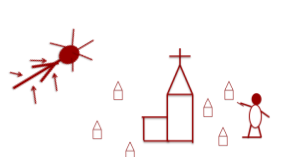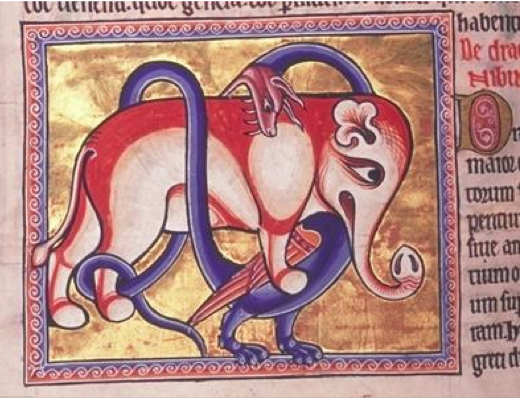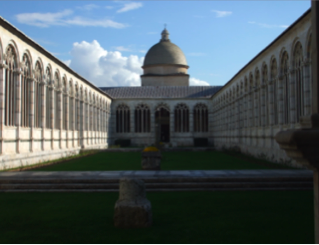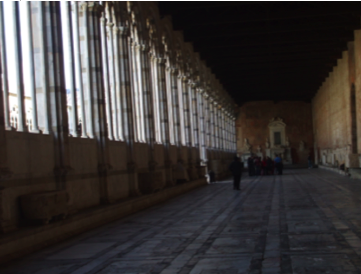Part III. Italy
Chapter 42. Becoming Apprenticed [January 4, 1348]
Cultural Explanations
 |
Part III. Italy Chapter 42. Becoming Apprenticed [January 4, 1348] Cultural Explanations |
|
 |
In this chapter Bávlos begins to learn the painter's trade and visits the Camposanto. |
| San Sebastiano, Pisa, Buonamico |
In this chapter, Bávlos begins his life as a painter's apprentice. He learns about preparing pigments, visits the Camposanto for the first time, and carves his own statue of San Sebastiano.
Apprenticeship was an important means of gaining access to a trade in the medieval world and becoming apprenticed was not an easy task. Buonamico, however, seems to be down on his luck. He possesses only one apprentice--Angelo--an orphan whose indenture has been paid for by the Florence authorities for orphans. Since 1294, the Guild of Merchants (Arte di Mercatanti) had taken responsibility for providing for orphans in the city. Later, in 1419, they would finance Brunelleschi's magnificent Ospedale degli Innocenti as a home for the city's burgeoning population of "orphans," more usually illegitimate children turned over to the institution by people unwilling to anknowledge them as their own. The guild arranged for such children to learn a craft or trade or become servants, thereby also supplying a source of cheap labor for the different guild craftsmen in the process. In medieval accounts of Buonamico, he is never depicted as having apprentices; thus, I felt I could represent him as being in need of Bávlos's free labor.
The work of a painter was nearly impossible without the help of apprentices. The preparation of pigments and media, the application of layers of glue and metal gilding, and the various other steps entailed in making a painting were extremely time-consuming and complex. I have drawn the details of the way to make certain pigments here from Daniel V. Thompson's fine study The Materials and Techniques of Medieval Painting (available in a Dover reprint of the original 1956 imprint). All the processes here are accurate as described: the different colors obtained by grinding aethiops coarsely or finely, the method of burying lead in manure and then roasting it, the value of lapis lazuli, etc. That cinnabar was the product of battles between elephants and dragons was widely believed at the time. Bávlos is not exceptional in having difficulty imagining the existence of an elephant: for the medieval person, the elephant seemed far more outlandish and hard to believe than the idea of a large, fierce serpent.
 |
Elephant and Dragon in battle. Aberdeen Bestiary
|
Bávlos's fear of the Camposanto is based on Sámi traditions of using graveyard soil to compel the dead to work in one's service. Johan Turi mentions this clandestine activity in his Sámi deavsttat/Lappish Texts of 1918-19, and this idea is widespread in Nordic folklore more generally.
 |
 |
| Thc Camposanto, Pisa. | The Camposanto, Pisa. |
Bishop Giovanni Scarlatti was indeed the newly ensconced archbishop of Pisa in 1348. His nephew Luigi, however, is fictional.